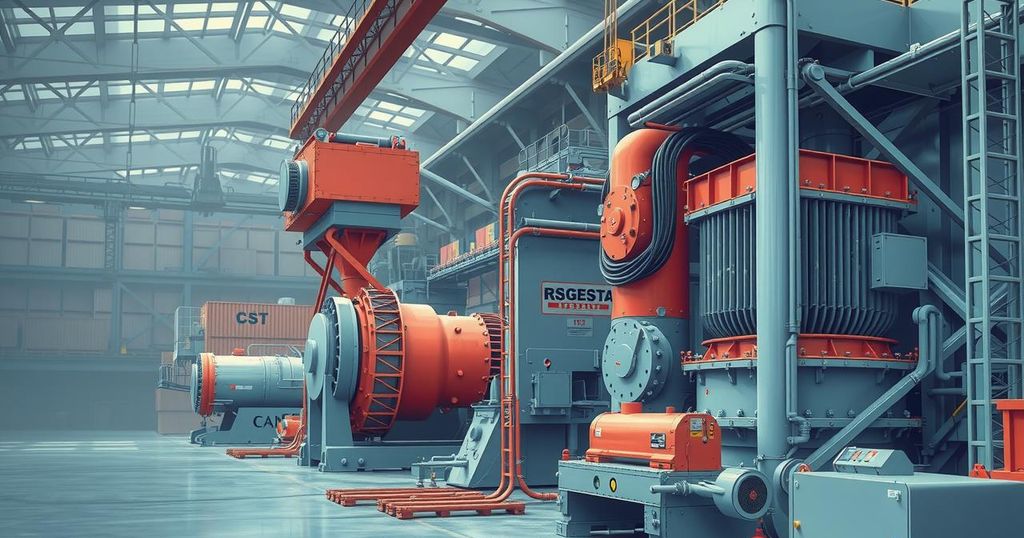U.S. tariffs under President Trump on Chinese imports now exceed 20%, targeting China’s manufacturing sector. Tariffs are intended to encourage domestic purchases, but they have historically resulted in increased consumer prices. Analysts warn that while tariffs may weaken export demand, China’s infrastructure and pivot to advanced technology may sustain its manufacturing dominance. China is responding with counter-tariffs and by diversifying its supply chains, particularly through relations with Vietnam.
The recent tariffs imposed by United States President Donald Trump on imports from China have escalated to an additional levy of at least 20%. This strategy targets China’s robust manufacturing sector, which has thrived due to advantageous labor costs and significant state investment since the late 1970s. Despite these tariffs, the strength of China’s trade surplus remains evident, with a record surplus of $1 trillion in 2024 arising from exports valued at $3.5 trillion, far exceeding imports at $2.5 trillion.
Tariffs are taxes levied on imported goods, intended to elevate prices of foreign products, thereby nudging consumers towards domestically produced alternatives. Though President Trump has framed these tariffs as measures to fortify economic growth and job preservation in the U.S., prior studies indicate they have resulted in increased costs for American consumers. The rationale behind the latest tariffs also includes pressuring China to curb the opioid fentanyl crisis affecting the U.S.
Analysts foresee significant repercussions for China’s economy as its exports constitute a critical portion of its income. Predictions suggest that if tariffs persist, exports to the U.S. could potentially diminish by 25% to 33%. The chief economist at Natixis, Alicia Garcia-Herrero, noted that tariffs would adversely affect China’s economic landscape, emphasizing the necessity for increased domestic demand amidst a sluggish property market and employment challenges.
While tariffs may impose challenges on Chinese manufacturing, their complete eradication is unlikely. China maintains expertise in specific sectors, such as solar panels, where it is the sole exporter. Furthermore, the transition towards advanced technologies has fostered an early mover advantage for China, enabling it to produce high-tech goods at competitive prices despite tariffs.
To counteract the impact of U.S. tariffs, China has enacted retaliatory tariffs on American agricultural products and implemented restrictions affecting U.S. firms in strategic industries. Adaptations have included relocating factories to countries like Vietnam and Mexico to sidestep tariffs. Analysts reaffirm that Vietnam offers a viable route for China to circumvent U.S. tariffs, despite recent tariff actions against Mexico.
China’s ambition to become self-reliant in advanced technology positions it strategically amidst U.S. restrictions on chip access. Chinese investments in domestic technology are accelerating, as evidenced by AI firm DeepSeek’s development of competitive chatbots similar to OpenAI’s ChatGPT. Experts remain divided, suggesting that while restrictions could alter competitive dynamics, they are unlikely to diminish China’s foundational status as a manufacturing powerhouse.
China’s ascendancy to a manufacturing superpower is attributed to government support, a comprehensive supply chain, and low labor costs. Analysts highlight that globalization, coupled with favorable business policies, attracted foreign investment. This growth was facilitated by substantial infrastructure investments, ensuring rapid transportation of materials and goods. As China shifts increasingly towards advanced technology, its position is fortified amid fluctuating U.S. trade relations.
Despite these challenges, China has a unique opportunity to secure a role as a proponent of free trade worldwide, although its past trade practices may hinder this ambition. Analysts urge China to diversify trade partnerships beyond the U.S., as it remains a key market for Chinese exports. Given the interdependence of the two nations as the largest economies, the potential for collaborative trade is far from extinguished.
In conclusion, while Trump’s tariffs aim to weaken China’s manufacturing capabilities, the extensive economic and technological infrastructure established in China poses significant resilience against these trade barriers. The interplay between tariffs and international trade dynamics underscores a complex economic landscape, where China’s advancements in technology and strategic adaptations may affirm its status as a leading manufacturing power. Future trade relationships will likely continue to evolve, demanding thoughtful navigation from both nations amidst their intertwined economic fates.
Original Source: www.bbc.com




